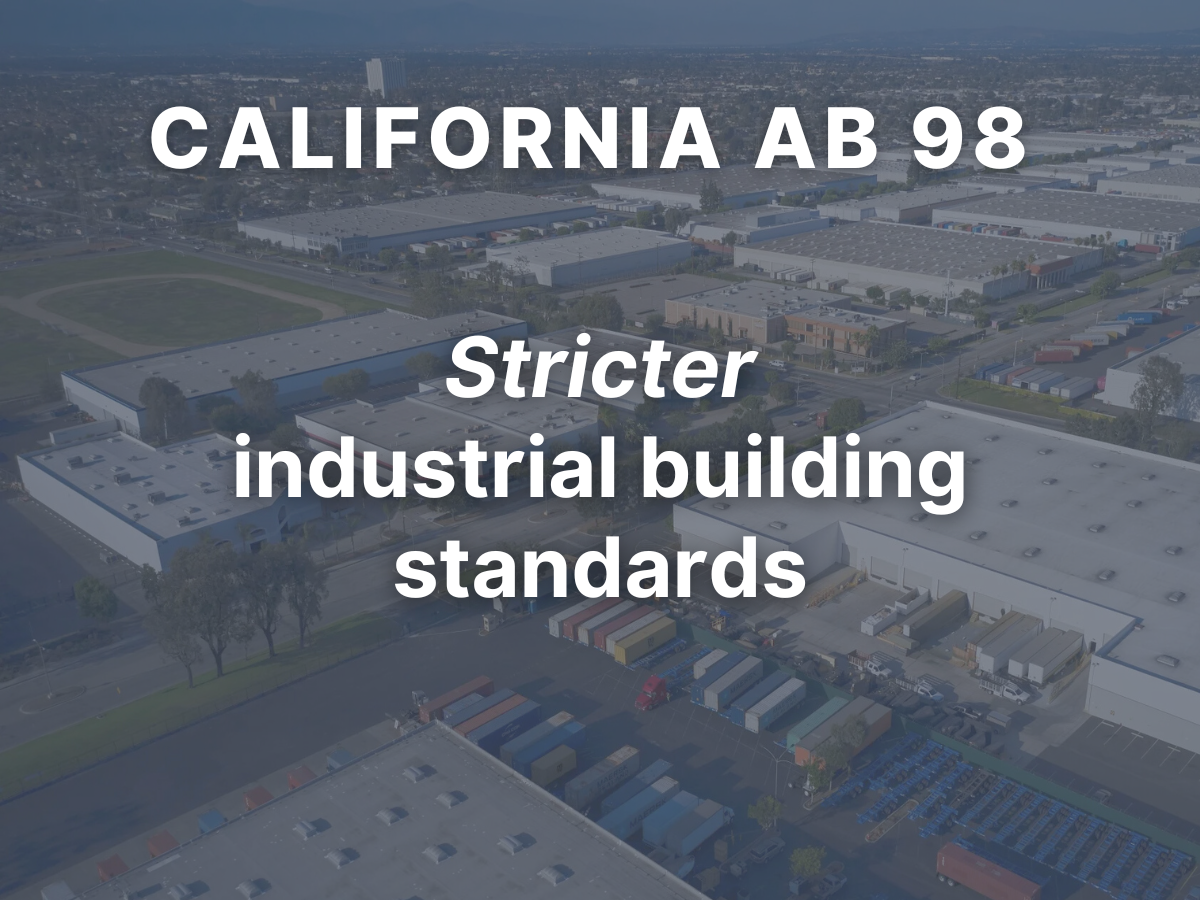NAIOP I.CON West Industrial Conference: Achieving Net-Zero Targets Panel Top 10 Takeaways
Achieving Net-Zero Targets for Industrial Developers
Grant Waldron, Director of Sustainability Strategy at GAIA, shared insights at NAIOP I.CON West’s 2023 Industrial Real Estate Conference (March 9 2023). Panelists included,
Nick Isham: Managing Director, Asset Management at W.P Carey
Brian Wilson: Principal at Bridge
Gabe Schwartz: VP, Sales and Marketing at sitelogiq
Matthew Praske: Director, Sustainability Innovation at EQT Exeter
Recap by NAIOP
Challenges abound as industrial owners and operators set aggressive targets to reduce emissions and tackle ESG goals. A panel of experts discussed their progress toward net zero and shared some best practices during NAIOP’s I.CON West in Long Beach, California.
Moderator Gabe Schwartz, vice president of sales and marketing at SitelogIQ, led the discussion and asked panelists to share their experience pursuing solar projects in the current climate.
Since joining EQT, Matt Praske, the company’s director of sustainability innovation, said one of his top priorities has been to fill a pipeline of on-site solar opportunities quickly.
“There are many different project structures to get solar on roofs and existing buildings. We’ve been running at one that takes advantage of community solar opportunities in various jurisdictions in Maryland, New Jersey, and Illinois, and coming up in Southern California. That’s exciting,” Praske said.
Grant Waldron, Head of Sustainable Strategy at GAIA, supports a lot of industrial developers on new construction projects built around sustainability.
“Since we’re in California, it’s worth pointing out that the new property building code requires solar in our new industrial buildings,” Waldron said. “It’s important to bring a solar developer on early or bring in a solar consultant to do the brand’s design and ensure engineers are getting early looks at things that can get pushed to the end. This streamlines the implementation and usually reduces costs as well,” he added.
Learning the lessons of foresight and the value of the team is part of working toward net-zero targets.
“For me, it’s developing a bench of trusted partners across various regions. With this, I can point to our property managers and deal teams and say, ‘This is who we go to for solar across the country, and this is who we go to for energy efficiency or lighting retrofits or charging.’ It’s an extension of my team,” Praske said. “This way, we’re working smarter, not harder, with just one point of contact across these topics. This is now our standard approach. Having trusted partners streamlines our ability to collect information on what’s being done throughout the portfolio,” Praske explained.
Because the industry is still immature and there are evolving rules and regulations, Brian Wilson, partner, West Region, Bridge Industrial, said there are pitfalls that can be avoided with due diligence.
From an internal perspective, a lack of alignment among internal teams can be challenging. To overcome what he called “the ESG eye-roll factor” during meetings, Wilson said it’s crucial to build a robust internal team.
Nicolas Isham, managing director, asset management for W.P. Carey, said getting everyone on the same page has been crucial to W.P. Carey’s success.
“In our case, we formed the ESG committee, and we got all the department heads on the same page. The ESG committee set the sustainability strategy and big-picture perspective. Getting buy-in from all the different folks within a company is a big piece. Make sure that everyone has input. It makes everyone feel like they have ownership in the process,” Isham said.
“If there’s a tool you haven’t heard about yet, conduct an ESG materiality assessment, evaluate what matters to your stakeholders and look at the potential business outcomes,” Praske suggested. “We get so many inbound requests across such a breadth of topics, whether carbon emissions, water use, waste, biodiversity, employee engagement, tenant engagement, health and wellness. By conducting a materiality assessment, we’re able to determine what’s most material to our business.”
Praske said electrification of buildings (moving all energy use to electricity and then supplying it with clean sources either on-site or off-site) presents another obstacle.
“That’s retrofitting existing buildings and removing natural gas from the equipment on site to all-electric sources. And then being prepared to partner with and support our tenants as they electrify their fleets,” Praske said.
“What are the powers demands that we would be able to provide at the site? What’s the charging infrastructure? Who handles that? How do we make that mutually beneficial? We haven’t solved these challenges yet, but if anyone else has, feel free to tell me how you’re doing this after the panel,” Praske said to the audience with a laugh.
10 Industrial Insights from I.CON West 2023
Source: blog.naiop.org
The outlook for the U.S. economy is closely tied to the labor market, which is historically tight.
“GDP is a function of labor, capital and productivity,” said keynote Rebecca Rockey, economist and global head of economic analysis and forecasting at Cushman & Wakefield. “A slowing population and slowing workforce growth means that we need technology to help us create output at higher rates – to offset lost output from less labor growth.”Industrial absorption is cooling but demand remains strong overall.
“Industrial is doing well, no distress to speak of, but banks have had to be less transactional and are playing defense, looking at their portfolio, working on mods,” said Valerie Achtemeier, vice chairman of capital markets, CBRE. “So, the banks have not been particularly active. For a while, the regional banks were stepping in to fill that void, and now they’re requiring heavy deposits.”
The COVID-19 pandemic upended the supply chain and changed the calculus involved with nearshoring.
“We started having this trend of changing from a global economy with global sourcing to a regionally global economy,” said Gregg Healy, executive vice president and head of industrial service for North America at Savills. Now, “there is a tiered approach, with a lot of product coming in from [the global South] and coming to these nearshore or friendshore countries that are more friendly to the United States.”
Some markets offer advantages based on labor market indexes and total cost modeling, but the logistics labor market in the Inland Empire remains hard to beat.
“Half of our business is in the Inland Empire,” said Ryan Shelton, senior vice president, market officer leasing West, Link Logistics Real Estate. “What we’re learning is that real estate site selection is highly focused on labor and the future growth of labor. What makes the Inland Empire so great is that the concentration of workers, warehouse and material handling workers is very strong, and the amount of growth in the last five years has been 400%, which is extraordinary and unmatched.”
Vertical industrial – whether used for fulfillment, maker spaces, labs or light manufacturing – requires a new approach, different requirements and a whole lot of explaining.
“Once a certain height is reached, it qualifies as high-rise construction, which is a different code and review process,” said Ken Sun, senior vice president, regional head of development – West region, Prologis. “Plus it’s more expensive. This is where tenant requirements are important and identifying the true needs for the project.”
Investors are interested in industrial opportunities in Southwest markets, particularly in Las Vegas and Phoenix, which have seen strong population growth.
“One thing not discussed as much in the headlines is the East Coast companies that don’t have a West Coast hub facility,” said Sean Zaher, senior vice president for CBRE. “Historically, they would have gone into Southern California. Now, they’re stopping at the border, whether it’s Las Vegas or Phoenix, and creating their West Coast hubs there.”
Power is the number one challenge for companies building or investing in the Mexican market.
Access to strong, reliable power is critical to manufacturing and assembly facilities. Private development investment is hindered by unique challenges of the country’s electricity regulation, needed federal investment in infrastructure, and skyrocketing costs of securing power rights. While government officials are beginning to understand these implications and are examining other sources of power, like wind and solar, the solutions aren’t quick.
Conversations and connections with the community are critical in helping industrial coexist peacefully with residential real estate.
“Industrial real estate is a team sport,” said Patrick Daniels, co-founder/chief executive officer, CapRock Partners LLC. He presented an industrial entitlement and development case study on Palomino Ranch Business Park, a 110-acre master-planned industrial park in Norco, California, about 75 miles east of the Port of Long Beach. “We knew we had to have the best-in-class; a great land use attorney along with architects and engineers,” as well as a public relations professional who would be key in connecting with the local community.
Get buy-in early – and from all parties involved – in order to streamline the implementation of sustainability strategies and achieve net-zero targets.
“Since we’re in California, it’s worth pointing out that the new property building code requires solar in our new industrial buildings,” said Grant Waldron, LEED AP, head of sustainable strategy, GAIA. “It’s important to bring a solar developer on early or bring in a solar consultant to do the brand’s design and ensure engineers are getting early looks at things that can get pushed to the end. This streamlines the implementation and usually reduces costs as well,” he added.
Flexibility, scalability and the ability to start operations quickly are key considerations for advanced manufacturing facilities.
Attendees were able to tour cutting-edge advanced manufacturing facilities in Douglas Park, an industrial, retail and hotel center that spans more than 260 acres adjacent to the Long Beach Airport. They visited Morf3D, a company advancing the aerospace industry using additive manufacturing, and Heliogen, which uses the power of the sun to create energy in their quest to replace fossil fuels.







